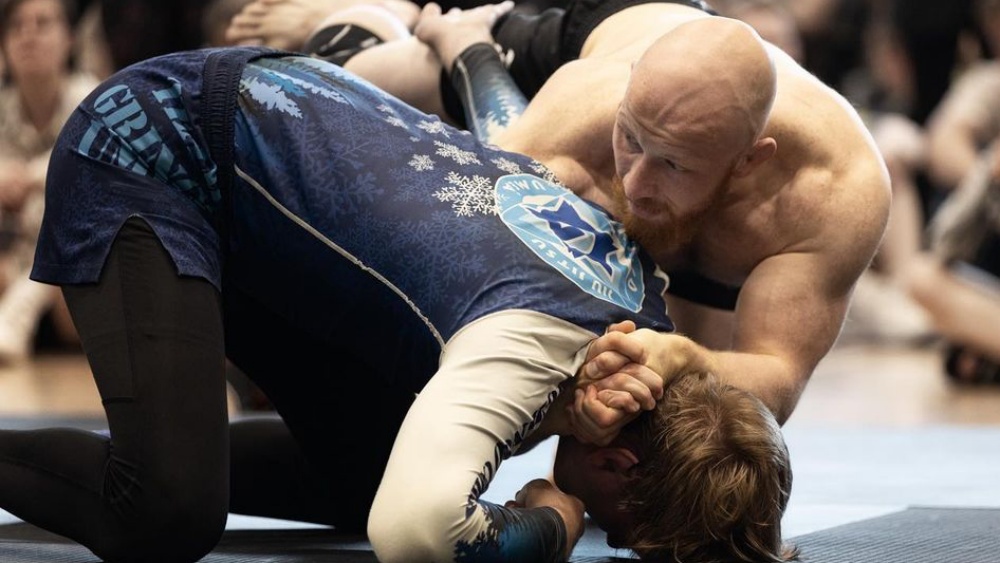Brazilian Jiu-Jitsu is a martial art that thrives on the complex interplay of technique, leverage, and movement. As you train over the years, various techniques are introduced, some of which are more unique than others. Among these techniques, the Japanese Necktie stands out as an effective and in many ways, an unorthodox submission. This article delves into the nuances of the Japanese Necktie, offering details for those seeking to master this move in Jiu-Jitsu.
What Is The Japanese Necktie?
Before diving into the technique itself, it’s worth noting the roots of the Japanese Necktie. While BJJ has roots in Judo and traditional Japanese Jiu-Jitsu, many of its methods have been adapted and refined for generations. The Japanese Necktie, despite its name, is more of a modern BJJ innovation than a traditional Japanese technique. Its name likely derives from its similarity to the D’Arce and Anaconda chokes but with a unique twist that distinguishes it.
Understanding The Position
The Japanese Necktie is a choke that targets the carotid arteries, similar to many other Jiu-Jitsu submissions. However, what sets it apart is its starting position and the mechanics of the choke. Typically, the move begins from the top-side control or a failed D’Arce choke attempt. As with its cousins, the Japanese Necktie aims to trap the opponent’s head and one arm, creating a noose around the neck.
Setting Up The Japanese Necktie
To set up the Japanese Necktie, you must first establish a solid top position, preferably side control. From here, the goal is to isolate the opponent’s near arm and head, similar to setting up a D’Arce. The difference is, instead of threading the arm through as in a D’Arce, the arm goes over the opponent’s neck, with the hand resting on the back of their shoulder. Ensure that once you get the initial grip, do your best to not let the opponent escape; they will do whatever it takes to escape the position.
Once this grip is secured, step over the opponent’s head with your near leg, placing the shin against the back of the opponent’s head. This positioning is crucial as it creates the necessary leverage for the choke. You should be able to build intense pressure if you do all the steps correctly.
Securing The Submission
With the grip and leg positioning established, the final step is to complete the choke. This is achieved by rolling towards the trapped arm, using the leg as a pivot point. As you roll, look to tighten the grip, ensuring the forearm presses against one side of the neck and the shin against the other.
The finishing pressure comes from a combination of pulling with the arms and pushing with the shin. Done correctly, the Japanese Necktie creates a potent squeeze on the carotid arteries, leaving the opponent no choice but to tap out.
The Nuances Of The Technique
The Japanese Necktie, like all submissions, has its subtleties. The angle of the arm, the positioning of the leg, and the rolling motion all play a crucial role in the effectiveness of the submission. It’s not just about squeezing, really; it’s about creating the right kind of pressure.
Moreover, the Japanese Necktie can be a surprise move. Given its rarity compared to other chokes, many practitioners are not familiar with its defense. This element of surprise can offer an advantage, especially against more experienced opponents. For this reason alone, it is recommended that you at least explore this technique and see if you like it. You should be able to catch many training partners with the Japanese Necktie.
Chaining Submissions
The Japanese Necktie is a submission that you can do in combination with other similar techniques. In this video, Brazilian Jiu-Jitsu expert Alex Humen shares a simple combination you can do to get into the Japanese Necktie. He demonstrates a sequence where you start with the Peruvian Necktie and then transition to the Japanese Necktie as an alternative.
This may look like a basic 2-move combination, but it is important to note the benefit of thinking in chains in all positions. Jiu-Jitsu is a very dynamic martial art with many positions, techniques, and transitions available. It is up to you to create a game where you can use the techniques you know in a coherent and systematic manner. If you prefer to attack the neck, including the techniques shown in this video is a smart idea.
Drilling The Japanese Necktie
To master the Japanese Necktie (or any technique for that matter), consistent practice is essential. It’s a move that benefits from repetitive drilling, allowing the practitioner to understand the nuances of the choke. Furthermore, using it in live rolling provides an opportunity to set up and finish the move against a resisting opponent, offering invaluable real-world experience. Allow your instructors and training partners to also provide feedback as much as possible, as they can help refine the technique and address any mistakes. Given the complexity of the move, this feedback can be instrumental in mastering the Japanese Necktie.
Note that chokes like the Japanese Necktie are dependent on proper grip and positioning. Don’t just grab the neck and crank away. Yes, that can work against newbies, but if you want to submit the best guy in the gym, understanding the mechanics of the submission is a must. With this, consistent practice for several months is perhaps one of the best things you can do to get the hang of the technique.
Conclusion
The Japanese Necktie is a testament to the art’s evolving nature. It is a technique that showcases the innovation and adaptability of BJJ practitioners. While it may seem complex at first glance, with dedication and practice, the Japanese Necktie can become a formidable tool in any BJJ player’s arsenal.
Whether you’re a novice or a seasoned practitioner, exploring this choke can add depth to your submission game and catch your opponents off guard. Embrace the journey that is BJJ, and the path to mastery will unfold.
You may also like:

















